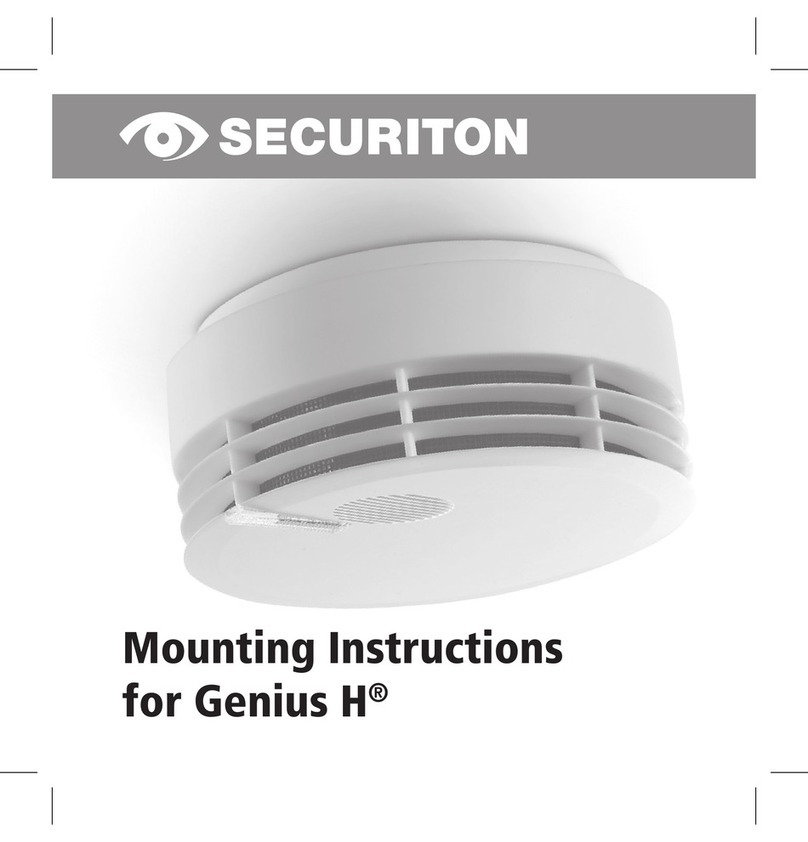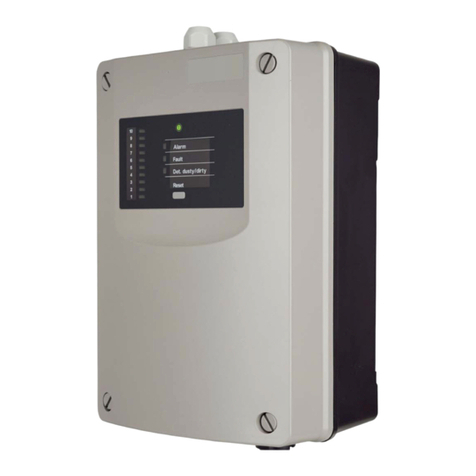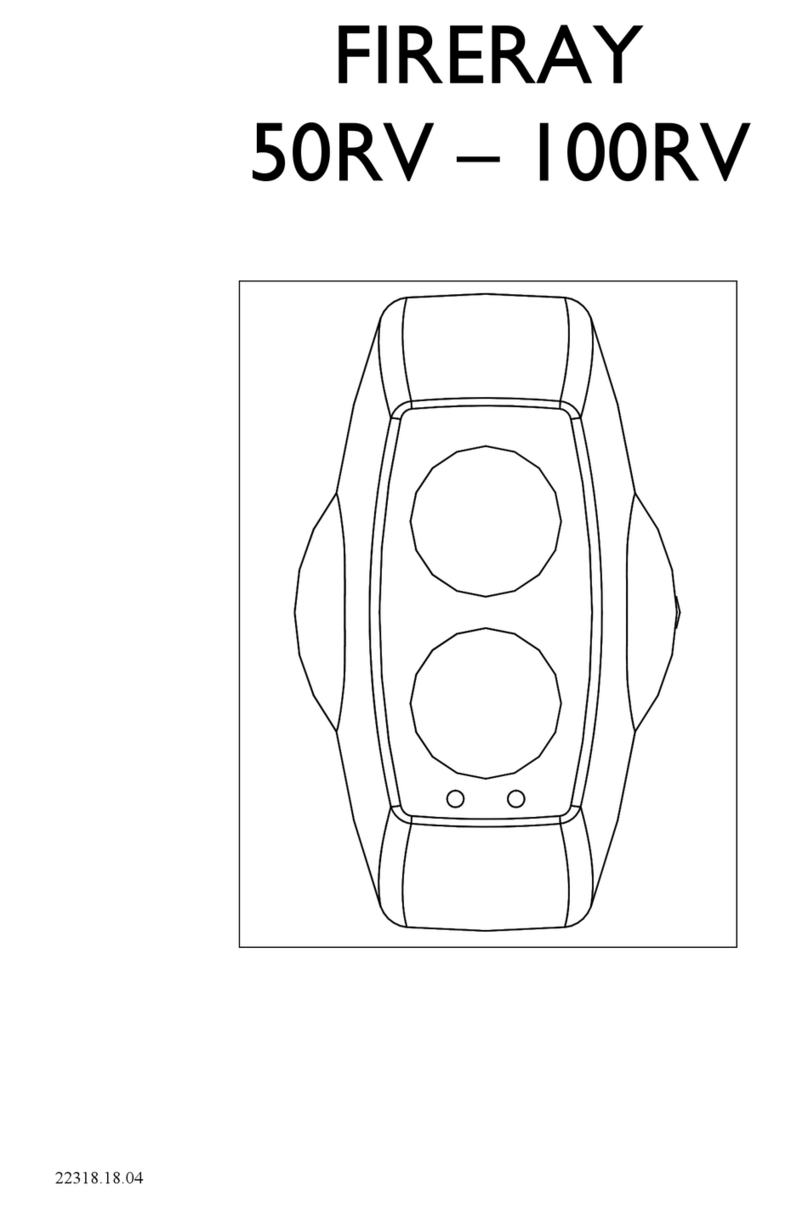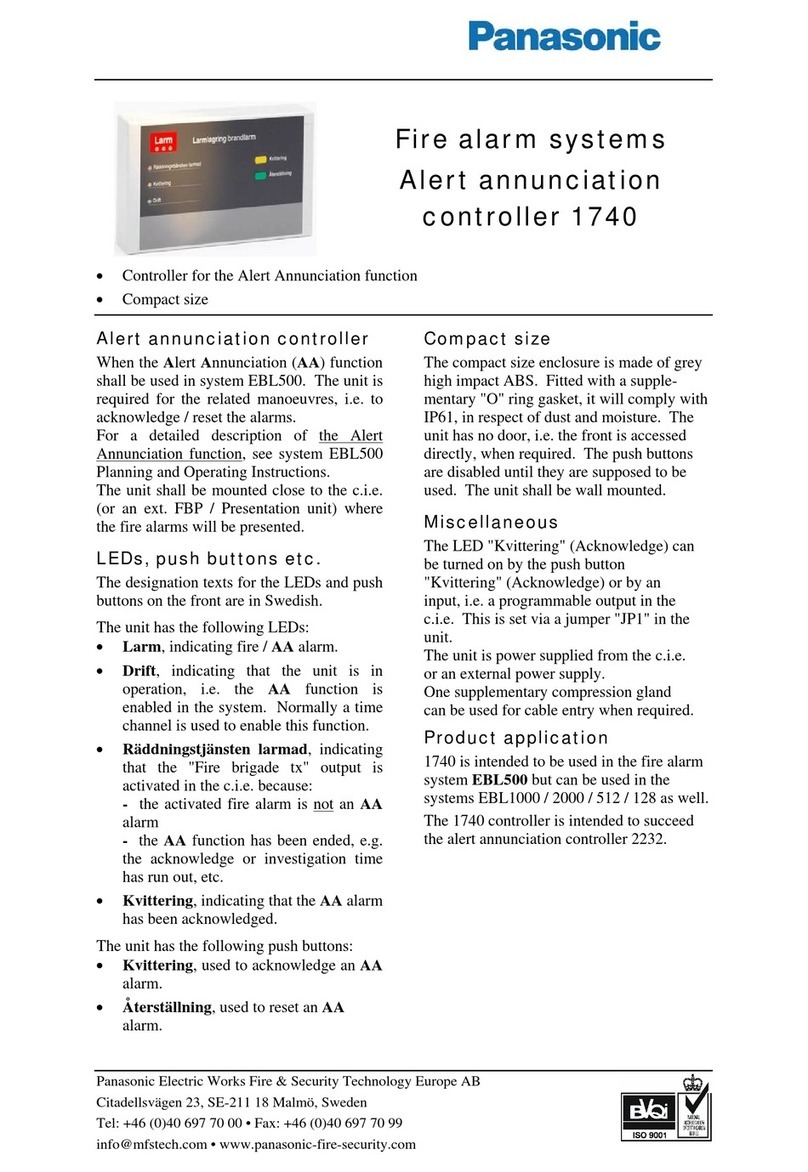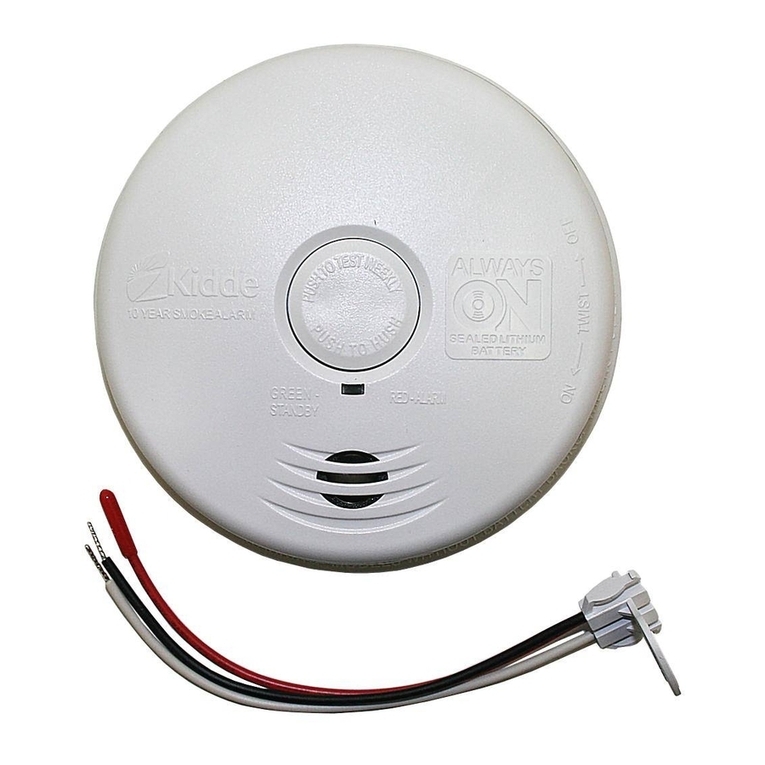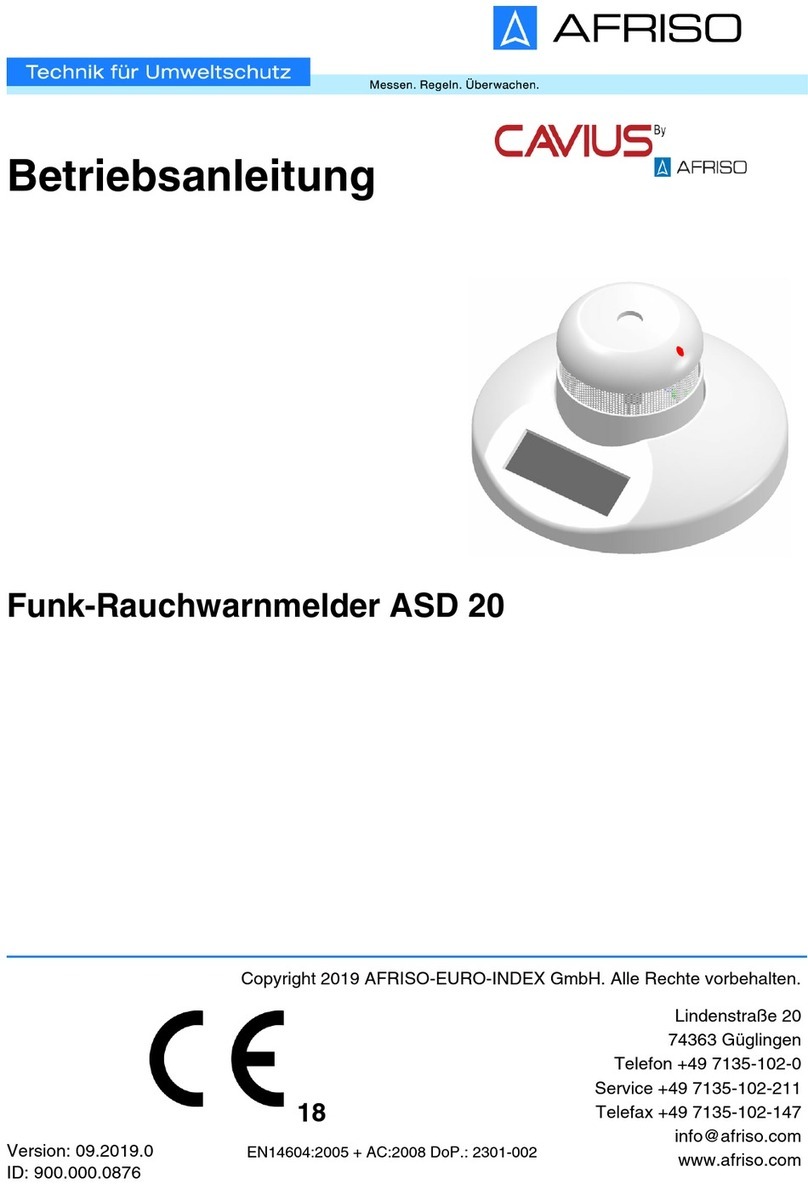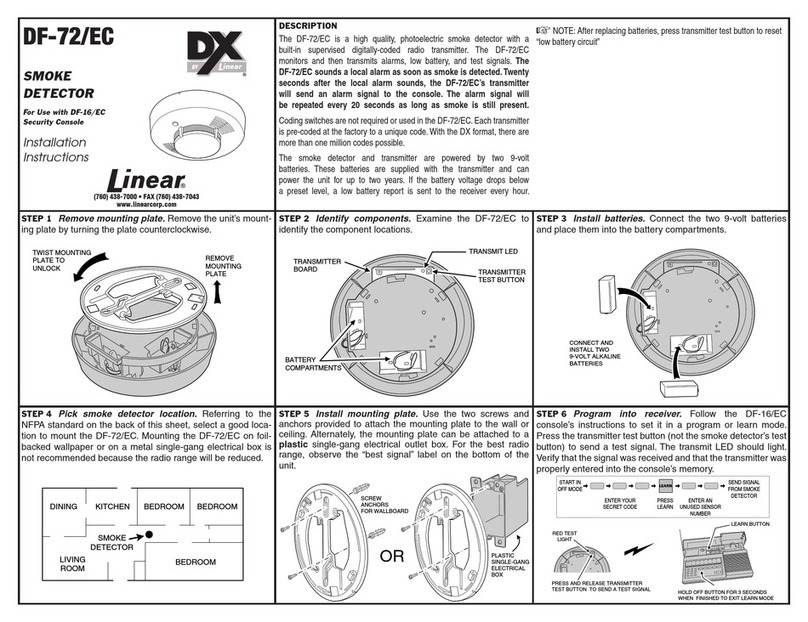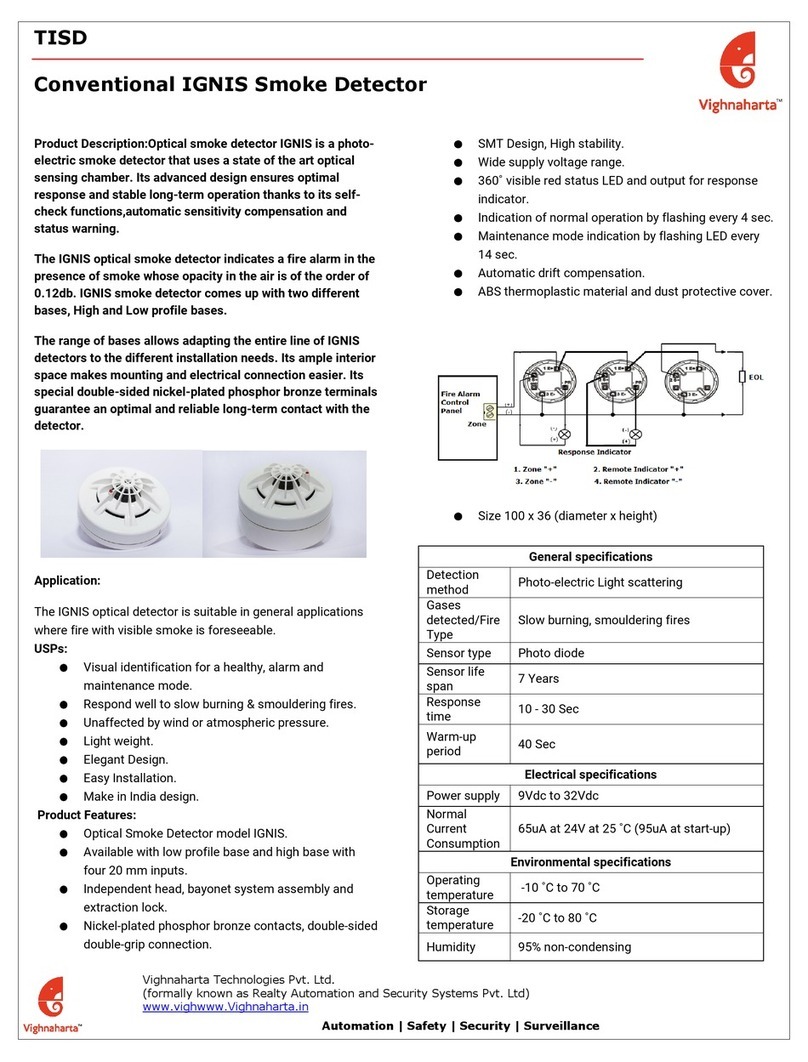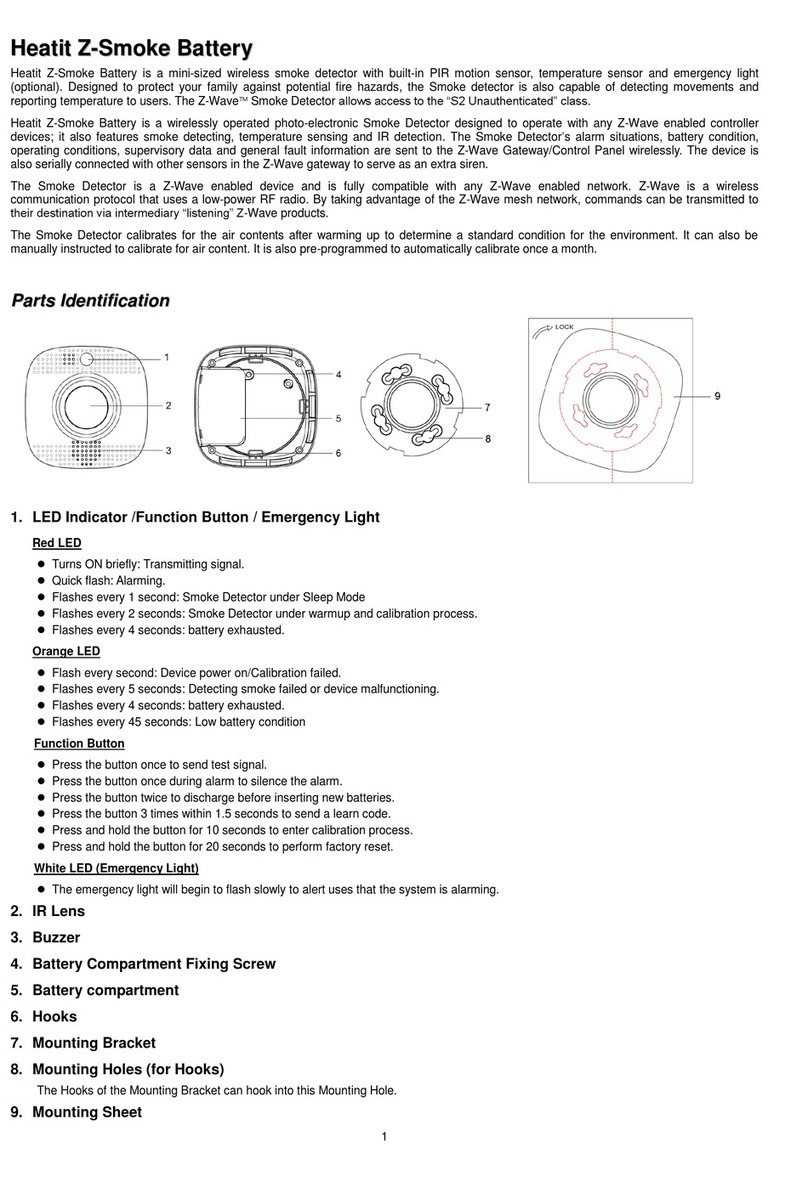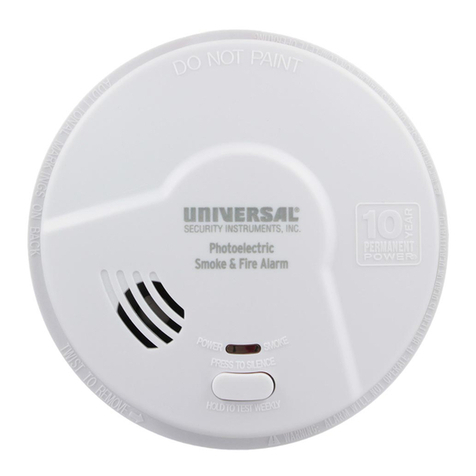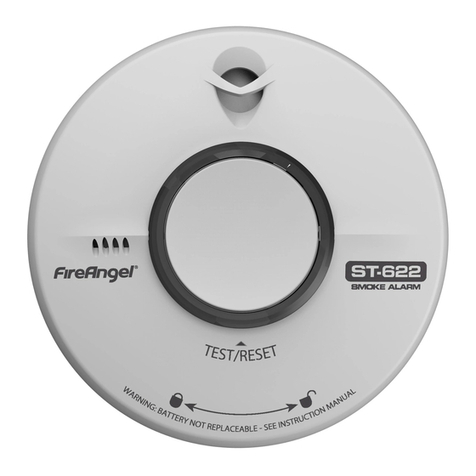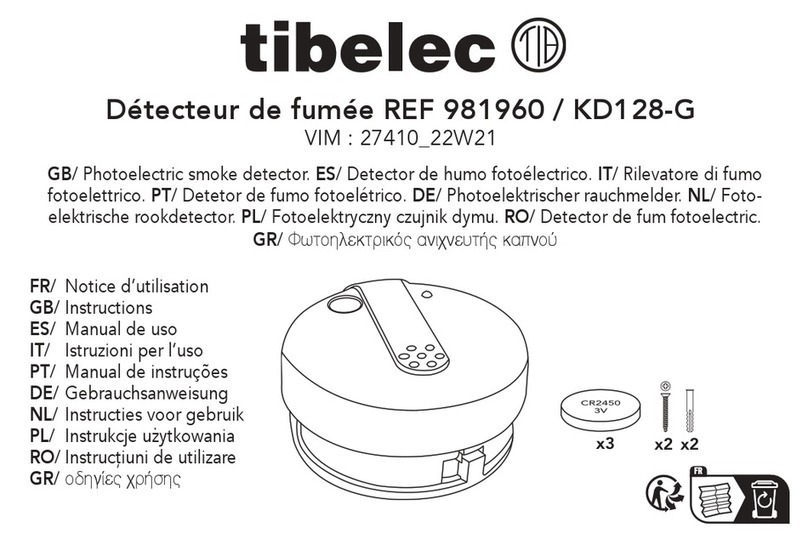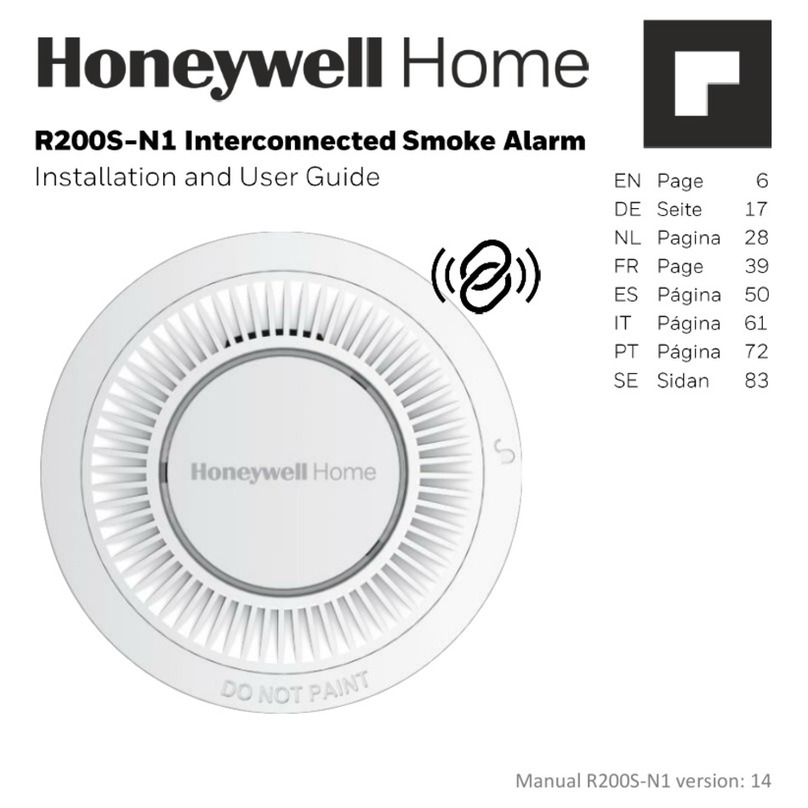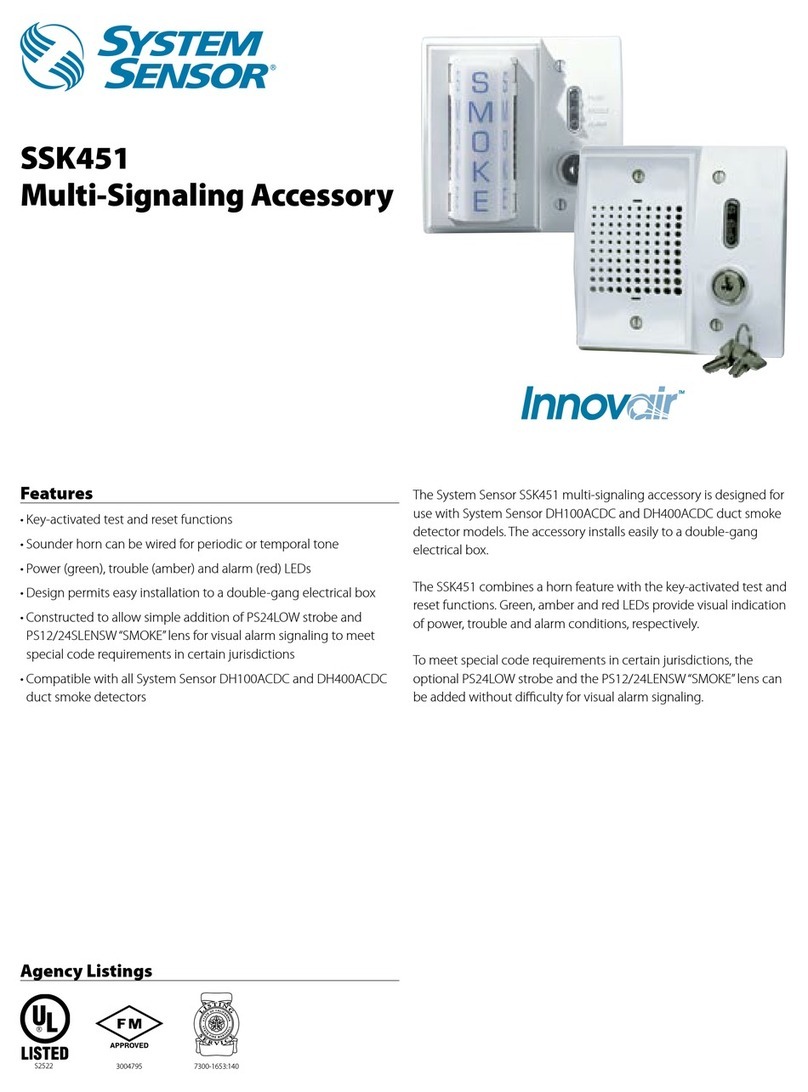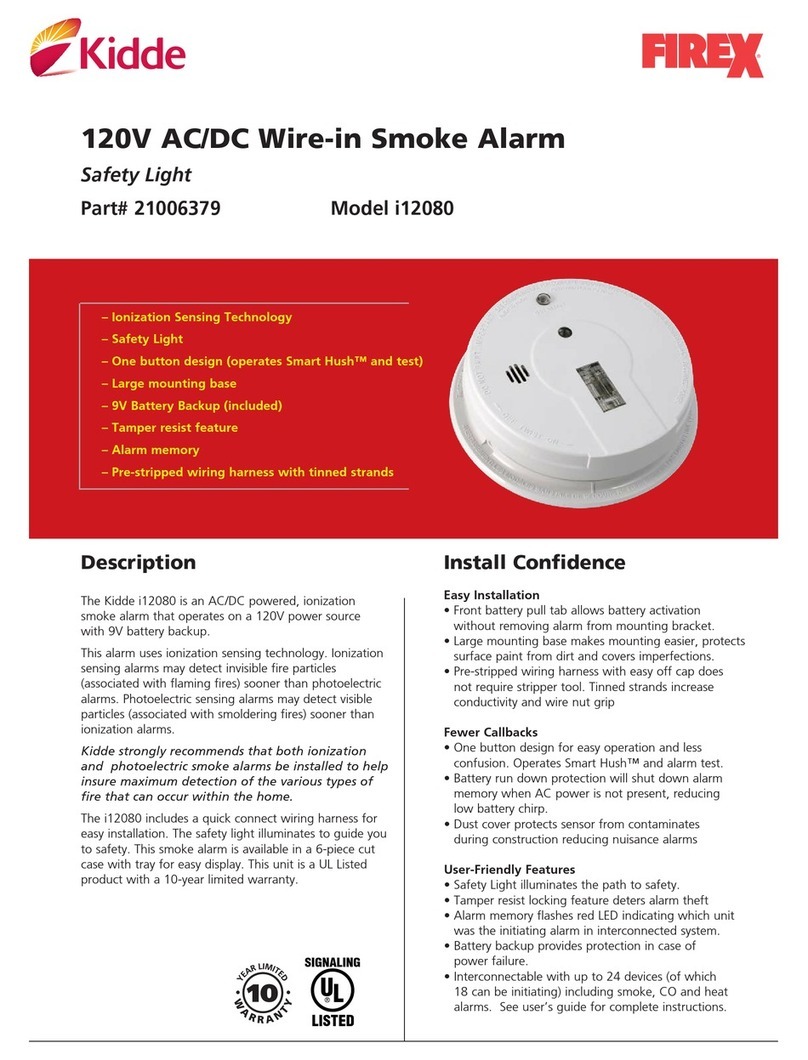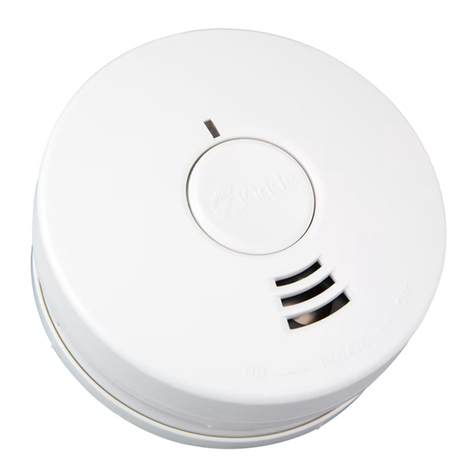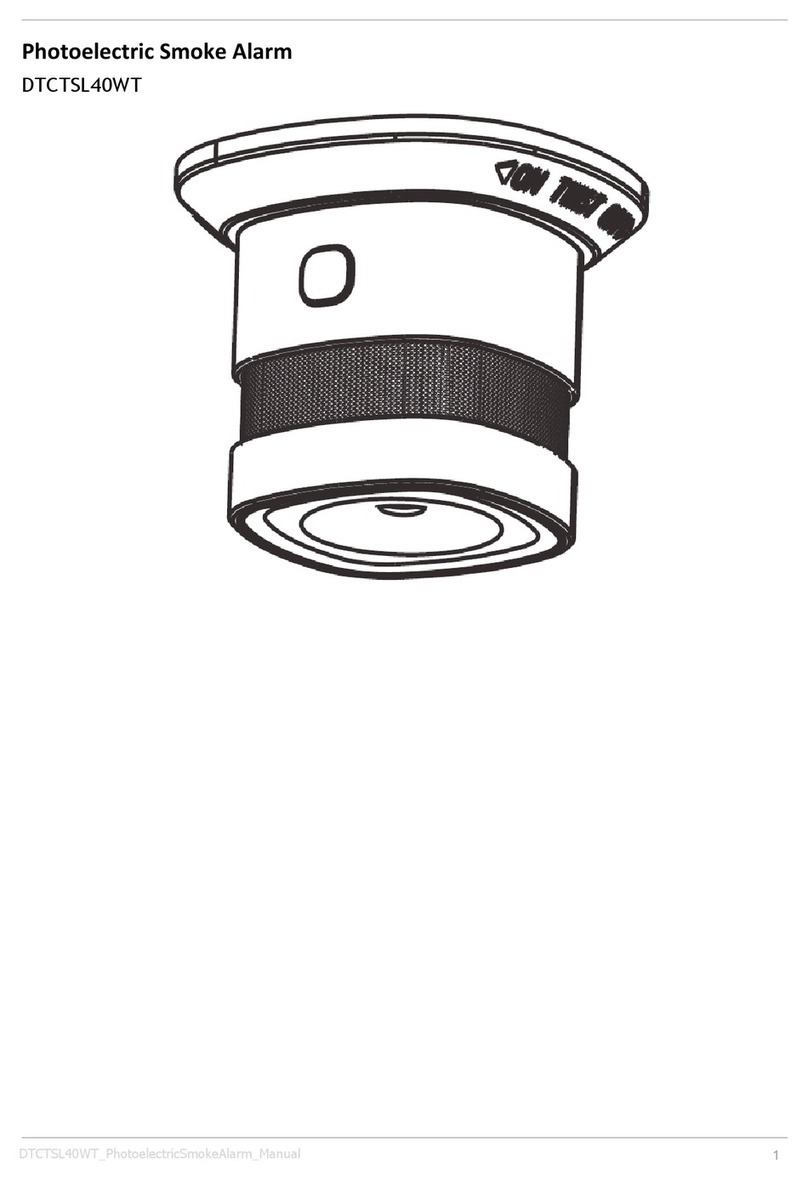Securiton ASD 531 Parts list manual

Securiton AG Alpenstrasse 20 3052 Zollikofen Switzerland T 140 416 en
ASD 531
Aspirating Smoke Detector
Technical description
as of firmware version 01.00.08


Imprint
ASD 531, Technical description, T 140 416 en 3 / 105
Imprint
Notice
This documentation, T
140 416, is valid only for the product described in Section 1.
This documentation is subject to change or withdrawal
without prior notice. The statements made in this docu-
mentation are valid until such time as the statements are revised by a new edition of the documentation
(T
number with new index). The user of this document is responsible for staying up to date with it
s current status
through the editor/publisher. We accept no responsibility for claims against any incorrect statements in this
document that were unknown to the publisher at the time of publication. Handwritten changes and additions are
not valid. This doc
umentation is protected by copyright.
Foreign language documentation as listed in this document is always released or changed at the same time as
the German edition. If there are inconsistencies between the foreign language documentation and the German
doc
umentation, the German documentation is binding.
Some words in this documentation are highlighted in
blue
. These are terms and designations are the same in all
languages and are not translated.
Users are encouraged to contact the editor/publisher if there are statements which are unintelligible, misleading,
incorrect or contain errors.
© Securiton AG, Alpenstrasse 20, 3052 Zollikofen, Switzerland
Document T 140 416 is available in the following languages: German T 140 416 de
English T 140 416 en
Current edition: First edition 15.10.2015 Bmi/ksa
Notice
Validity for production version and firmware version
The following documentation is applicable only to the
ASD 531 aspirating smoke detector with the following pro-
duction version and firmware version:
Production version Firmware version
from 151015 from 01.00.08

Imprint
4 / 105 ASD 531, Technical description, T 140 416 en
Other documents
Data sheet ASD 531
T 140 417
de / en
Material for the sampling pipe
T 131 194
Multilingual (ED / FI)
Commissioning protocol
T 140 418
Multilingual (EDFI)
Data sheets
XLM 35
T 140 088
de / en / fr / it / es / pt / sv
RIM 36
T 140 364
de / en / fr / it / es / pt / sv
AFU 32 Aspirating Fan Unit mounting instructions
T 140 426
Multilingual (EDFI)

Safety information
ASD 531, Technical description, T 140 416 en 5 / 105
Safety information
Provided the product is deployed by trained and qualified persons in accordance with this documentation T 140 416 and the
danger, safety and general information notices in this technical description are observed, there is no danger to persons or
property under normal conditions and when used properly.
National and state-specific laws, regulations and directives must be observed and adhered to in all cases.
Below are the designations, descriptions and symbols of danger, safety and general information notices as found in this docu-
ment.
Danger
If the Danger notice is not properly observed, the product and any other system parts may present a hazard for
persons and property, or the product and other system parts may be damaged to the extent that malfunctioning
results in danger to persons and property.
•
Description of which dangers may occur;
•
Measures and preventative actions;
•
How dangers can be averted;
•Any other safety-related information.
Warning
The product may be damaged if the warning information is not heeded.
•
Description of which damage can occur;
•
Measures and preventative actions;
•
How dangers can be averted;
•Any other safety-related information.
Notice
The product may
malfunction if this notice is not observed.
•
Description of the notice and which malfunctions can be expected;
•
Measures and preventative actions;
•Any other safety-related information.
Environmental protection / recycling
Neither the product nor its
components present a hazard to the environment provided they are handled properly.
•
Description of which parts have environmental protection issues;
•
Description of how devices and their parts have to be disposed of in an environmentally-friendly way;
•Description of the recycling possibilities.
Batteries
It is not permitted to dispose of batteries in the domestic rubbish. As the end user you are legally obliged to return
used batteries. Used batteries can be returned to the seller or taken to a designated
recycling centre (e.g. a
community collection point or dealer) at no cost. You may also send them back to the seller by post. The seller
will refund the postage when you return your old batteries.


Document history
ASD 531, Technical description, T 140 416 en 7 / 105
Document history
First edition Date 15.10.2015


General
ASD 531, Technical description, T 140 416 en 9 / 105
Contents
_________________________________________________________________________________________
1General 13
1.1 Purpose 13
1.2 Uses and applications 14
1.3 Abbreviations, symbols and terms 14
1.4 Product identification 16
1.5 Smoke sensors used 17
1.6 Hardware / firmware 17
_________________________________________________________________________________________
2Function 18
2.1 General operating principle 18
2.2 Electrical functional principle 19
2.2.1 Power supply 19
2.2.2 Fan control 20
2.2.3 Microcontroller 20
2.2.4 Programming / operation 21
2.2.5 Displays 22
2.2.6 Relay 22
2.2.7 Outputs 23
2.2.8 Input 23
2.2.9 Interfaces 23
2.2.10 Airflow monitoring 24
2.2.11 Smoke sensor monitoring 24
2.2.12 Alarm release 24
2.2.12.1 Isolating the smoke sensor 24
2.2.13 Fault triggering 25
2.2.14 Event memory 25
2.2.15 Data logging on the SD memory card 25
2.2.16 Reset types 26
2.2.16.1 State reset 26
2.2.16.2 Hardware reset 26
2.2.16.3 Initial reset 26
_________________________________________________________________________________________
3Design 27
3.1 Mechanical 27
3.2 Electrical 29
3.3 Hardware / firmware 30
3.4 List of materials / components 31
3.5 Packaging 31

General
10 / 105 ASD 531, Technical description, T 140 416 en
_________________________________________________________________________________________
4Planning 32
4.1 General aspects of planning 32
4.1.1 Standards, regulations, guidelines, approvals 32
4.2 Area of application 32
4.2.1 System limits 33
4.3 Planning aids 33
4.3.1 Planning with “ASD PipeFlow” calculation 33
4.3.1.1 Values table for planning with “ASD PipeFlow” 34
4.3.2 Planning without “ASD PipeFlow” calculation 35
4.4 Space surveillance 35
4.4.1 Space surveillance applications 35
4.4.2 Principles of space surveillance 36
4.4.3 Types of sampling pipe layouts for space surveillance 37
4.4.4 System limits for space surveillance without “ASD PipeFlow” calculation 38
4.4.4.1 Detector sensitivity setting without “ASD PipeFlow” calculation 38
4.4.4.2 System limits for planing without “ASD PipeFlow” calculation 39
4.4.4.3 Sampling holes for planning without “ASD PipeFlow” calculation 39
4.4.4.4 Maintenance sampling hole 40
4.5 Equipment monitoring 41
4.5.1 Equipment monitoring applications 41
4.5.2 Principles of equipment monitoring 41
4.5.3 Examples of sampling pipe layouts for equipment monitoring 42
4.5.4 Sampling fixtures and sampling holes in equipment monitoring 42
4.6 Air recirculation 43
4.7 Settings 44
4.8 Electrical installation 45
4.8.1 Installation cable requirements 45
4.8.2 Determining the conductor cross-section 46
4.9 Restrictions 47
4.10 Environmental influences 48
_________________________________________________________________________________________
5Mounting 49
5.1 Mounting guidelines 49
5.2 Dimensioned drawing / drilling plan for the detector housing 49
5.3 Material for the sampling pipe 50
5.4 Mounting the detector housing 51
5.4.1 Opening and closing the detector housing 52
5.4.2 Mounting positions for the detector housing 53
5.4.3 Removing the air outlet pipe plug 54
5.4.4 Turning the labelling strip 54
5.5 Mounting the sampling pipe 55
5.5.1 General 55
5.5.2 Mounting with PVC tubes and fittings 55
5.5.3 Mounting with ABS tubes and fittings 55
5.5.4 Mounting with metal pipes and fittings 56
5.5.5 Linear expansion 56
5.5.6 Mounting the sampling pipe 57
5.5.7 Mounting for equipment monitoring 58
5.5.7.1 Screw-free fastening of the sampling pipe 58
5.5.7.2 Transition to a flexible tube 59
5.5.8 Creating the sampling holes 60
5.5.9 Mounting the sampling hole clips and maintenance clips 60
5.5.10 Mounting the sampling funnel 60
5.5.11 Mounting sampling stubs for a ceiling bushing 61
5.5.12 Mounting the filter-box, filter unit, dirt trap box, dust retaining box, water retaining box 62

General
ASD 531, Technical description, T 140 416 en 11 / 105
_________________________________________________________________________________________
6Installation 63
6.1 Regulations 63
6.2 Cable entry 63
6.3 Deploying smoke sensors 64
6.4 Installing additional modules XLM 35, RIM 36 65
6.5 Electrical connection 65
6.5.1 Terminal assignment Main Board AMB 31 66
6.5.2 Terminal assignment for eXtended Line Module XLM 35 67
6.5.3 Terminal assignment for RIM 36 Relay Interface Module 67
6.6 Connection variants 68
6.6.1 Power supply 68
6.6.2 Reset input 68
6.6.3 Control 69
6.6.3.1 Control via voltage supply by means of auxiliary relay 69
6.6.3.2 Control via “Reset external” input 70
6.6.4 Connection to the FACP line 71
6.6.4.1 Connection to zone detection via Al / St relays 71
6.6.4.2 Connection to selective identification or addressable loop via Al / St relays 71
6.6.4.3 Connection to SecuriFire / Integral addressable loop from XLM 35 72
6.6.5 OC outputs 72
_________________________________________________________________________________________
7Commissioning 73
7.1 General 73
7.2 Programming 74
7.2.1 Configuration options 75
7.2.1.1 Smoke sensor alarm threshold 75
7.2.1.2 Air flow tolerance & delay time 75
7.2.1.3 Self-holding relay 75
7.3 Starting up 75
7.3.1 Commissioning procedure 76
7.3.2 Setting the alarm threshold without “ASD Pipeflow” calculation 76
7.3.3 Setting the alarm threshold with “ASD Pipeflow” calculation 77
7.3.4 Setting the air flow tolerance and delay time 77
7.3.5 Set date and time 78
7.3.6 Initial reset 78
7.3.7 Isolate device 78
7.3.8 Logging off additional modules XLM 35, RIM 36 and the SD memory card 79
7.3.9 Switch device inactive 79
7.4 Re-programming 80
7.4.1 Re-programming on the ASD 531 80
7.5 Download new firmware to the ASD 531 81
7.6 Measurements 81
7.6.1 Reading the airflow 82
7.7 Testing and checking 83
7.7.1 Checking the alarm release 83
7.7.2 Test triggerings 84
7.8 Commissioning protocol 84
_________________________________________________________________________________________
8Operation 85
8.1 Operation and display elements 85
8.2 Functional sequence of operation 86
8.3 Rotary switch “Mode” switch positions 86
8.4 Reset 87
8.5 Displays 87
8.5.1 Displays on the control unit 87
8.5.2 Indicators on the AMB 31 main board 88
8.5.3 SD memory card operation 88
8.5.3.1 Data logging on the SD memory card 88
8.5.4 Reading out the event memory 88
8.5.4.1 Interpretation of the event memory 88
8.5.4.2 Event groups 89
8.5.4.3 Event codes within event groups 89
8.5.5 Operation and displays on the XLM 35 91

General
12 / 105 ASD 531, Technical description, T 140 416 en
_________________________________________________________________________________________
9Maintenance and service 92
9.1 General 92
9.2 Cleaning 92
9.3 Maintenance checks and function checks 93
9.4 Replacing units 95
9.4.1 Replacing the smoke sensor 95
9.4.2 Replacing the aspirating fan unit 95
9.4.3 Replacing the air flow sensor 96
9.4.4 Replacing the AMB 31 Main Board 96
9.5 Disposal 97
9.5.1 Materials used 97
_________________________________________________________________________________________
10 Faults 98
10.1 General 98
10.2 Warranty claims 98
10.3 Finding and rectifying faults 99
10.3.1 Fault states 99
_________________________________________________________________________________________
11 Options 102
11.1 Sampling pipe 102
11.2 Use under extreme conditions 102
11.3 Use of detector boxes 102
_________________________________________________________________________________________
12 Article numbers and spare parts 103
12.1 Detector housings and accessories 103
12.2 Sampling pipe and accessories 103
_________________________________________________________________________________________
13 Technical data 104
_________________________________________________________________________________________
14 List of figures 105

General
ASD 531, Technical description, T 140 416 en 13 / 105
1 General
1.1 Purpose
The ASD 531 aspirating smoke detector has the task of continuously taking air samples via a sampling pipe tube network from
a monitored area and feeding the samples to a smoke sensor. Thanks to this detection method and the product’s excellent
properties under severe ambient conditions, the ASD 531 aspirating smoke detector is used wherever problems are to be ex-
pected owing to poorly accessible monitored areas or latent disturbance variables during operation such that optimal protec-
tion can no longer be guaranteed with conventional point detectors.
The SSD 31 smoke sensor is used in the ASD 531. It has an alarm sensitivity range of 0.02%/m to 10%/m.
The ASD 531 aspirating smoke detector has two slots for additional modules. The following modules can be fitted:
•XLM 35 eXtended Line Module
•RIM 36 Relay Interface Module with 5 relays;
With the installation of a eXtended Line Module XLM 35 the ASD 531 aspirating smoke detector can be ideally connected to
the fire alarm systems SecuriFire (SecuriLine eXtended) and Integral (X-Line) via the addressable loop. Control operations and
changes to the ASD device configuration can be carried out directly from the FACP (in preparation). For this purpose the
FACP user software “SecuriFire Studio” and “Integral Application Center” are used to start the “ASD Config” configuration
software for access to the ASDs; the configuration software is then used to make changes to the ASD 531.
A further installation option is the RIM 36 Relay Interface Module. This module enables the availability of all three pre-signal
levels as well as the states of the smoke sensor and the sampling pipe.
The present technical description contains all information essential for trouble-free operation. For obvious reasons only those
details specific to individual countries and companies or special applications can be discussed if they are of general interest.

General
14 / 105 ASD 531, Technical description, T 140 416 en
1.2 Uses and applications
Thanks to the detection method, air sampling by means of a sampling pipe tube network and the good properties of the prod-
uct under extreme ambient conditions, the ASD 531 aspirating smoke detector is used wherever problems can be expected
owing to poorly accessible areas to be monitored or latent disturbance variables during operation such that optimal protection
cannot be guaranteed with conventional point detectors. This includes:
•Space surveillance:
EDP rooms, ultra-clean rooms, warehouses, hollow floors, protection of cultural assets, transformer stations, prison cells,
etc.
•Equipment monitoring:
EDP systems, electrical distributors, switch cabinets, etc.
The ASD 531 can also be deployed in areas where normally conventional point detectors are used. Local regulations and pro-
visions must be observed from case to case.
The response behaviour of the ASD 531 has been tested in compliance with EN 54-20, Class A, B and C.
When control-unit-specific alarm transmitters, line monitoring elements etc. are used, the ASD 531 can be connected via its
potential-free change-over contacts to all common fire alarm systems virtually without restrictions.
1.3 Abbreviations, symbols and terms
The following abbreviations, symbols and terms are used in the Technical Description T 140 416. The abbreviations for tube
material and accessories are listed in a separate document: T 131 194 (see also Sec. 5.3).
µC
=
Microcontroller / microprocessor
ABS
=
Acrylonitrile-butadiene styrene (plastic)
AFS 32
=
Air Flow Sensor
AFU 32
=
Aspirating Fan Unit
Al
=
Alarm
AMB 31
=
ASD main board
ASD
=
Aspirating Smoke Detector
ASD PipeFlow
=
Calculation software for the sampling pipe, “ASD PipeFlow” as of Version 2.3
BasiConfig
=
Commissioning without the “ASD PipeFlow” calculation software
CE
=
Communauté Européenne (European Community)
DA
=
Detection area
Default
=
Preset values / settings
DET
=
Detector
DIN
=
Deutsche Industrie Norm (German industry standard)
DZ
=
Detection zone
EDP
=
Electronic data processing
EEC
=
European Economic Community
EEPROM
=
Memory component for system data and ASD configuration
EMC
=
Electromagnetic compatibility
EN 54
=
European standards for fire alarm systems (Germany = DIN, Switzerland = SN, Austria = Ö-Norm)
Ex-zone
=
Area subject to explosion hazards
FACP
=
Fire alarm control panel
FAS
=
Fire alarm system
Fault
=
Fault
Flash PROM
=
Memory component for firmware
Flush mounting /
surface mounting
= Flush mounted / surface mounted
FW
=
Firmware
GND
=
Supply ground (minus (-) pole)

General
ASD 531, Technical description, T 140 416 en 15 / 105
Continuation:
H-Al
=
Main alarm
HF
=
High frequency
HW
=
Hardware
IEC
=
International Electrotechnical Commission
Initial reset
=
First start-up on commissioning
IPS 35
=
Insect Protection Screen
LED
=
Light-emitting diode (indicator)
LS
=
Airflow
LS-Ü
=
Airflow monitoring
Manufacturer
=
Securiton
OC
=
Open collector output
OEM
=
Original Equipment Manufacturer (reseller)
PA
=
Polyamide (plastic)
PC
=
Personal computer
PC
=
Polycarbonate (plastic)
PE
=
Polyethylene (plastic)
Pin
=
Terminal pin
PMR 81
=
Semi-conductor relay
Port
=
Input or output component
PVC
=
Polyvinyl chloride (plastic)
RAM
=
Memory component
RIM 36
=
Relay Interface Module
RoHS
=
Restriction of Certain Hazardous Substances (eco-friendly manufacturing processes)
SecuriFire
=
FAS system
SecuriLine
=
Fire detector addressable loop
SecuriPro
=
FAS system
SSD 31
=
Smoke sensor
St
=
Fault
St-LS
=
Airflow fault
SW
=
Software
Te.
=
Terminal
UMS 35
=
Universal Module Support
Update / Release
=
Renewal / update of the firmware
V-Al
=
Pre-alarm
VDC
=
Direct current voltage
VdS
=
Verband der Schadenversicherer (Association of Indemnity Insurers, Germany)
VKF
=
Vereinigung Kantonaler Feuerversicherungen (Cantonal Fire Insurance Union, Switzerland)
VS
=
Pre-signal
Watchdog
=
Monitoring of the microcontroller
XLM 35
=
eXtended Line Module

General
16 / 105 ASD 531, Technical description, T 140 416 en
1.4 Product identification
For identification purposes, the ASD 531 and its units have rating plates or identification plates.
The following product identifications apply:
Rating plate on the ASD 531 and identification on the packaging
Additional conformity marks may be affixed to a second rating plate or to an extended area of the rating plate (wider plate).
Identification on the packaging of the mounted printed circuit boards
Notice
The rating plates, type designations and/or identifications on devices and printed circuit boards must not be r
e-
moved, written over or defaced in any way.
Many products, such as accessories and mounting materials, are identified only with a sticker showing the article number. The
manufacturer identifies these parts by article number.
3052 Zollikofen / Switzerland
11-2000002-01-01.
XXYYZZ
XX.YY.ZZSecuriton: 022.XXXXXX
Schrack: YYYYYYY
EN 54-20 Class: A, B and C
G xxxxxx
U: 14 - 30 VDC
Operating current (24 VDC):
Idle / fault:
Alarm:
Data sheet T 140 417
75 mA
80 mA
ASD 531
XXXXXXXXXX
Made in Germany
Approvals, approval mark
Manufacturer
Type designation
Response class
Operating voltage / current consumption
Document number (data sheet)
Approval number
Article number (Hekatron)
Article number (Securiton/Schrack)
Production date (day.month.year)
Production version (day/month/year)
ID number
1
Approvals, approval mark
Type designation
Article number (Hekatron)
Article number (Securiton/Schrack)
Production date (month/year)
Production version (day/month/year)
SECURITON XYZ 35
4000XXX.XXXX.XXYYZZ YY/ZZ
Securiton: XXX.XXXXXX
Schrack: YYYYYYY
Manufacturer

General
ASD 531, Technical description, T 140 416 en 17 / 105
1.5 Smoke sensors used
Danger
Only those smoke sensors in the device approval and in the list below may be used in the
ASD 531 aspirating
smoke detector. The use of third-party detectors voids the ASD 531 approval issued by the manufacturer.
The ASD 531 is fitted with the SSD 31 smoke sensor by the manufacturer. It has an alarm sensitivity range of 0.02%/m to
10%/m.
The response sensitivity of the smoke sensor can be adjusted within the range specified above. The value is defined via the
AMB 31. This applies to applications with as well as without calculations using “ASD PipeFlow” (Sec. 4.3.1 and 4.3.2 respec-
tively).
1.6 Hardware / firmware
The hardware is considered to comprise the complete detector housing and all the units belonging to the ASD 531 aspirating
smoke detector such as sampling pipe and mounting material.
The firmware is located on the Flash PROM in the ASD 531. An EEPROM is fitted for storing and saving system-specific pa-
rameters.
Danger
The
ASD 531 is to be operated only with the appropriate original firmware from the manufacturer.
Any unauthorised intervention in the firmware or the use of non
-
original firmware may result in malfunction and/or
in damage to the device. Furthermore, all guarantee and warranty rights with respect to the manufacturer of the
ASD 531 will become null and void as a result.
© Copyright by Securiton
All ASD 531 firmware is subject to the manufacturer’
s copyright. Any unauthorised intervention in the firmware, misuse,
copying or unauthorised trade with the firmware represents a breach of copyright and will be subject to legal proceedings.
Notice
A version change or extension of the
ASD 531
firmware does not imply a right to an upgrade or new release for
existing ASD 531 systems.

Function
18 / 105 ASD 531, Technical description, T 140 416 en
2 Function
2.1 General operating principle
In the sampling pipe tube network, the fan generates a vacuum which results in fresh air continuously reaching the detector
housing via the sampling pipe. In this way the smoke sensor is constantly supplied with new air samples from the monitored
area. Should the smoke concentration exceed the permissible value, the ASD 531 triggers an alarm. The alarm is indicated
visually on the ASD 531 and can be transmitted via a potential-free change-over contact to a superordinate fire alarm control
panel.
The operational reliability of the aspirating smoke detector depends on the functional reliability of the smoke sensor and on the
constant air supply to the system. A fan failure, blockage of the sampling holes or pipe breakage must be communicated to the
fire alarm control panel in the form of a fault signal. This condition is satisfied by the airflow monitoring of the ASD 531.
Fig. 1General operating principle
ASD 531
Housing
Smoke sensor
chamber
Installation location
for additional module Cable entries
Monitoring area
Sampling
holes
Sampling pipe network Smoke sensor Airflow sensor
Fan
Air outlet
AMB ASD Main Board

Function
ASD 531, Technical description, T 140 416 en 19 / 105
2.2 Electrical functional principle
Fig. 2Block diagram
2.2.1 Power supply
The operating voltage of the ASD 531 is +14 to +30 VDC. On the AMB 31 Main Board, 5 VDC of the operating voltage is di-
verted for internal voltage use.
The operating voltage is monitored on the AMB 31 for undervoltage. If the operating voltage falls below 13 VDC (+0 /
–0.3 VDC), the ASD 531 triggers an undervoltage fault.
Fan
Connection possibilities of the additional modules:
1 x XLM 35 to
1x RIM 36 to “”
“”
Option1
Option3
(16)
L1
C1
G1
L2
C2
G2 LED2
LED1
XLM 35
Air flow
sensor
Smoke sensor
SSD 31
15 14 13 12 11 10 987654321
LED1
IN
OUT
LED2
LED3LED4
LED5
(8)(8)
RIM 36
Reset
ext.
Rel. 2
Al Rel. 1
St OC Supply
Red. In
AMB 31
Air flow display
(16) (8)
Option3Option1
BAT
SENSSSD
Vent
15 14 13 12 11 10 987654321
HW-Reset
Wdog
CardOK
Com
Set/Res
OK Mode
Holes
Class
Relay
Airflow
AF+
AF-
Al
Flt
Det.
dusty
dirty
Pwr
LED1
LED2
LED3
LED4

Function
20 / 105 ASD 531, Technical description, T 140 416 en
2.2.2 Fan control
The physical and electrical properties of a fan cause a brief power surge when it is switched on and starts up, which in turn af-
fects the conductor dimensioning and the total power consumption of the fire alarm system.
A specially designed circuit therefore ensures that the fan cannot exceed a specific maximum power consumption in its start-
up phase. When the ASD 531 is switched on, the computer-controlled fan speed starts up slowly. After the fan has been pow-
ered up, the speed is kept constant.
Any blocking of the fan is detected by evaluating the motor speed. If the specified threshold is undershot, the fan supply is
switched off and a fault is signalled.
The ASD 531 aspirating smoke detector has a constant, specified fan speed. The speed is 5250 rpm.
2.2.3 Microcontroller
The entire program and switching sequence is controlled by a microcontroller. The firmware is stored on a Flash PROM. Sys-
tem-specific configurations are stored in an EEPROM.
The program is monitored by the internal watchdog of the microcontroller. In the event of a failure of the microcontroller circuit,
an emergency fault is triggered. This is signalled on the device by the steady lit Fault LED. The “Fault” relay switches.
Table of contents
Other Securiton Smoke Alarm manuals

